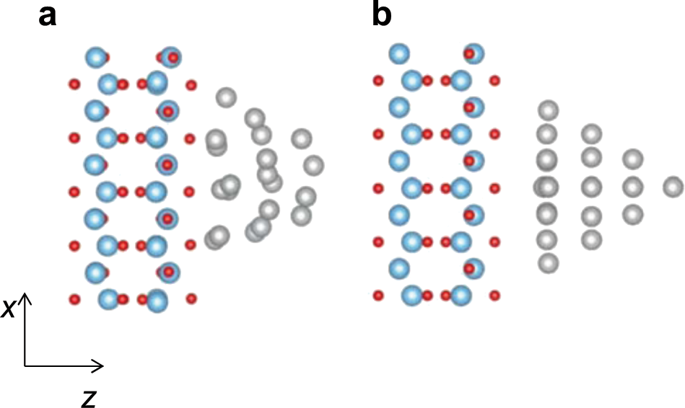npj Computational Materials ( IF 9.4 ) Pub Date : 2020-01-17 , DOI: 10.1038/s41524-019-0269-x Kenji Iida , Masashi Noda

|
The photoexcitation of heterostructures consisting of metallic nanoclusters and a semiconductor has been extensively investigated in relation to interests in photocatalysis and optical devices. The optoelectronic functions of the heterostructures originate from localized surface plasmon resonance, which can induce electron and resonance energy transfers. While it is well known that photoinduced electronic interaction between a metallic nanocluster and a semiconductor is responsible for the resonance energy transfer, the electron transfer associated with the photoinduced electronic interaction has not been discussed. In this paper, we elucidate the photoexcitation dynamics of a silver nanocluster/TiO2 heterostructure using an original first-principles computational approach that explicitly deals with light–matter interactions. It is shown that the photoinduced silver–TiO2 electronic interaction causes excited electrons to be directly transferred from the silver nanocluster to the TiO2 layer without passing through the conduction band of the silver nanocluster.
中文翻译:

电子转移受金属-半导体界面上光-物质相互作用的控制
关于光催化和光学装置的兴趣,已经广泛研究了由金属纳米团簇和半导体组成的异质结构的光激发。异质结构的光电功能源于局部表面等离子体激元共振,其可以引起电子和共振能量转移。虽然众所周知,金属纳米团簇与半导体之间的光诱导电子相互作用是引起共振能量转移的原因,但尚未讨论与光诱导电子相互作用相关的电子转移。在本文中,我们阐明了银纳米团簇/ TiO 2的光激发动力学。异质结构使用原始的第一性原理计算方法来显式处理光-物质相互作用。结果表明,光诱导的银-TiO 2电子相互作用使受激电子直接从银纳米团簇转移到TiO 2层,而没有通过银纳米团簇的导带。











































 京公网安备 11010802027423号
京公网安备 11010802027423号